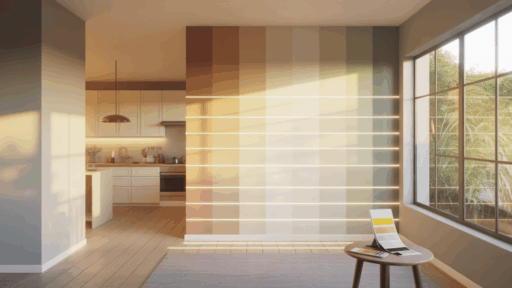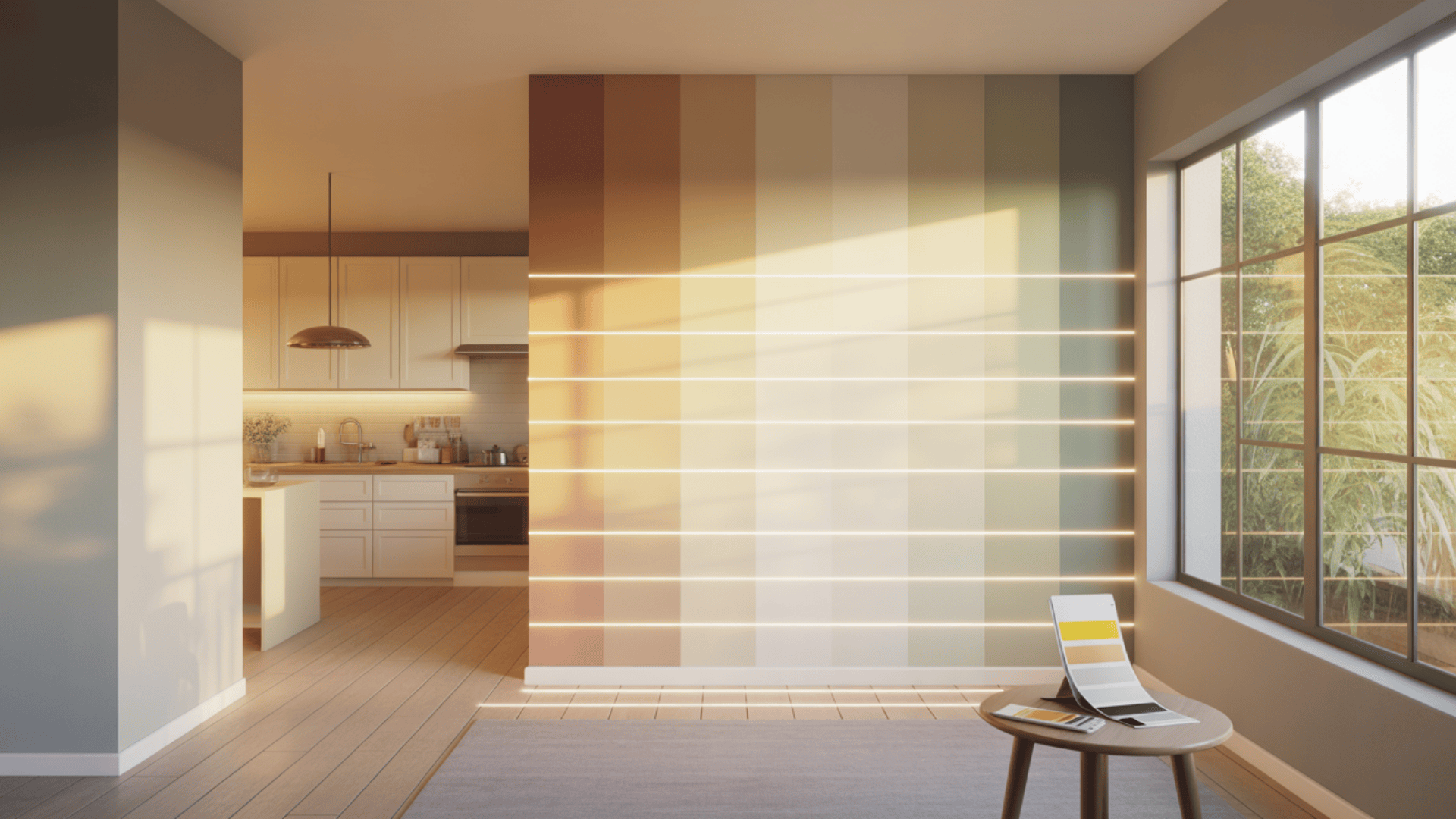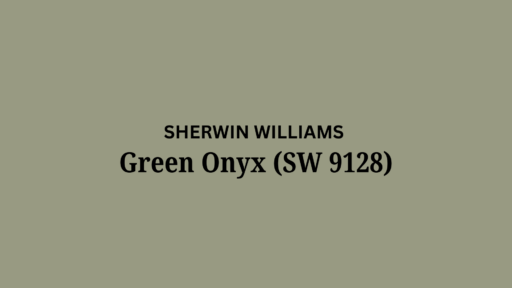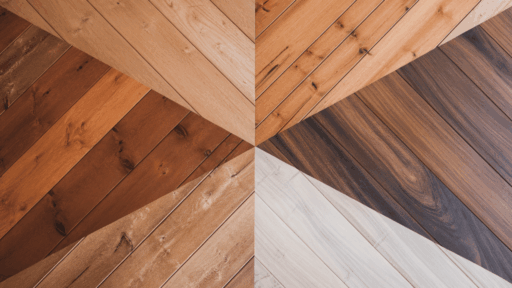Light Reflectance Value (LRV) helps explain how a paint color behaves in real rooms.
When choosing paint for walls, trim, or exteriors, LRV indicates how much light the color reflects.
It can help you create a space that feels just right and restful.
This tool isn’t only useful for experts.
Homeowners, renters, and DIYers can all benefit from understanding LRV.
It affects lighting needs, paint appearance at various times, and room transitions.
Without it, you might pick a color that looks perfect in the store but feels wrong at home.
LRV also matters for energy savings, comfort, and overall appearance.
Knowing how to use it will make your painting projects easier and more successful.
Let’s look at what LRV is, how it works, and how you can use it.
Light Reflectance Value (LRV) and Its Importance
Have you ever noticed how some colors make a room feel brighter?
That’s LRV at work! LRV measures how much light a color bounces back to your eyes, from 0-100%.
Dark colors have low LRV and absorb light, making rooms feel smaller and cozier.
Light colors have high LRV and reflect light, making spaces feel bigger and brighter.
This matters because it helps save energy since you need less lighting with high-LRV colors.
It also makes buildings more accessible for people with vision challenges.
Next time you paint a room, check the LRV! Want a cozy bedroom?
Go lower.
Need a bright kitchen?
Choose higher!
What’s your favorite room color?
How Paint Companies Measure LRV
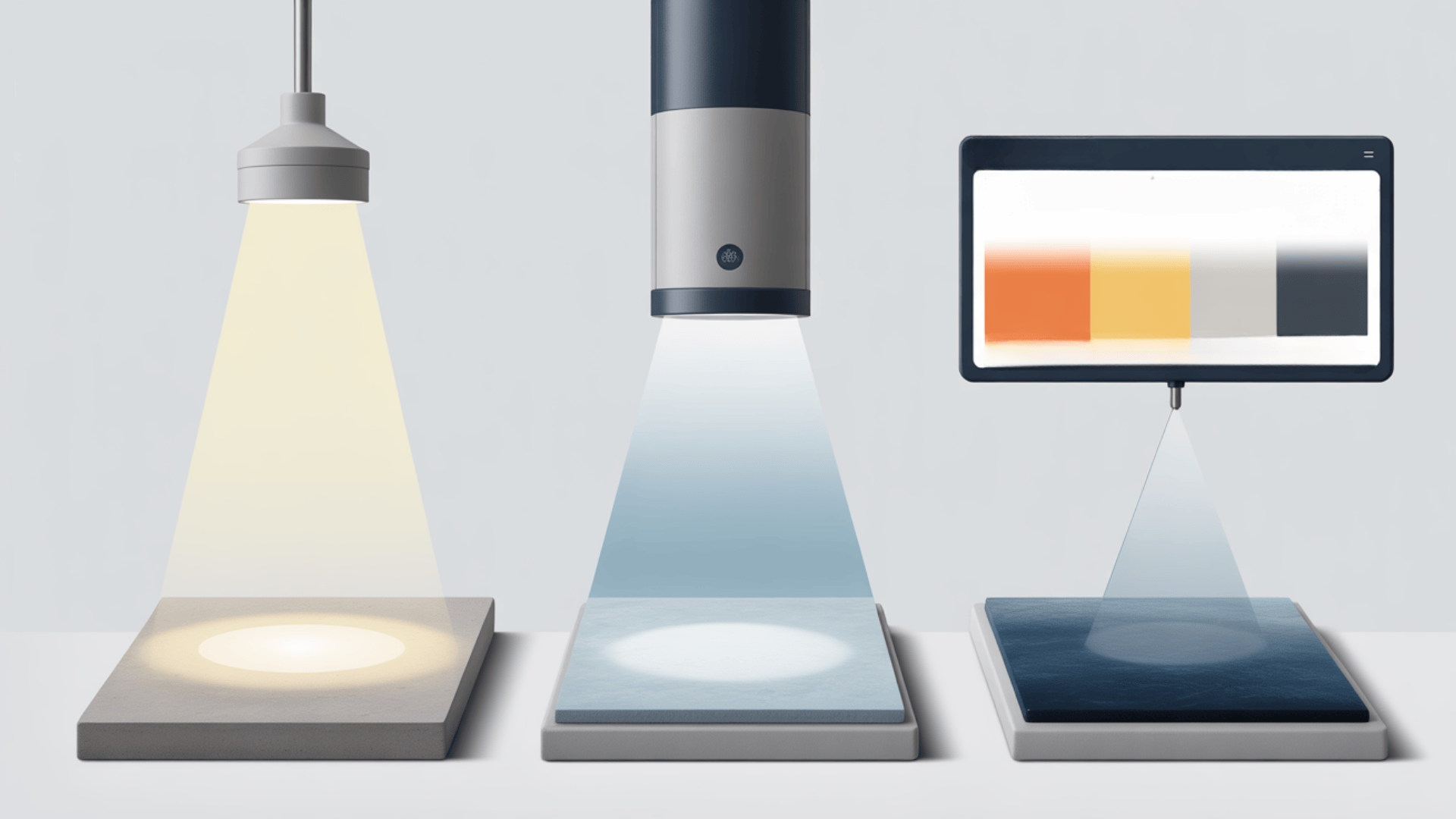
Paint brands do not guess the LRV.
They use lab tools to measure it.
Here’s how it works:
- A sample of paint is placed under a special light.
- The tool checks how much light bounces back.
- The number is recorded and shared on paint chips or websites.
If a color has an LRV of 75, it reflects 75% of the light that hits it, helping to brighten the room.
If a color has an LRV of 15, it will soak up most of the light and make the room look darker.
How Light Affects Paint Appearance
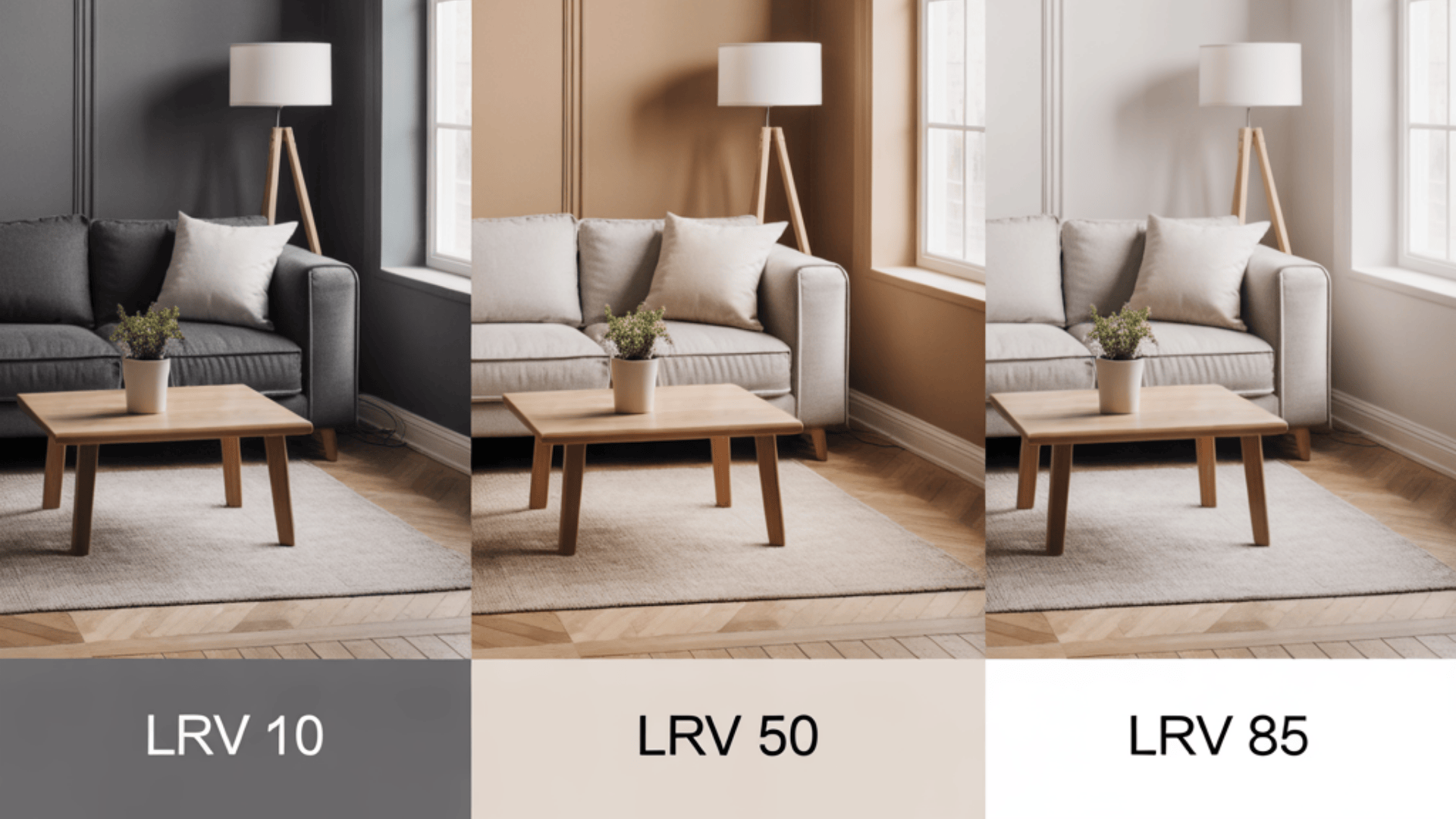
Paint does not look the same in every room.
Direction and type of natural light change how we see color.
For example:
- North-facing rooms have cool, steady light. Colors may look a bit grayer or bluer.
- South-facing rooms have strong, warm light all day. Colors appear warmer and richer.
- East-facing rooms get soft morning light. Colors can seem warmer early and cooler later.
- West-facing rooms glow with late-day sun. Colors look warm and golden in the evening.
Seasons matter, too. In winter, sunlight is lower and softer, and even bright colors can look flat.
In summer, the sun is stronger, and light-colored walls can feel more intense.
Testing paint in different light helps avoid surprises.
Energy Use and Light Reflection
LRV can also affect energy use.
High-LRV paints reflect more daylight.
That means you might not need to use as many lamps during the day.
This can help reduce energy costs, especially in larger homes or rooms without many windows.
In colder areas, using low, LRV colors on outside walls may help absorb more sun heat.
Choosing high LRV paints for kitchens, living rooms, and work areas keeps spaces bright with less effort.
Choosing the Right LRV for Each Space
Every room in a home has a different purpose and feel.
Choosing the right LRV helps match the paint color to the room’s use.
Here’s a table that offers helpful guidelines:
| LRV RANGE | EFFECT | ROOM TYPE |
|---|---|---|
| 2–10 | Very dark | Media rooms, accent walls |
| 10–20 | Dark | Quiet corners, reading areas |
| 20–40 | Medium | Bedrooms, hallways, dining rooms |
| 40–55 | Light-medium | Living rooms, shared spaces |
| 55–72 | Light | Small rooms, bathrooms |
| 73–81 | Off-white | Trim, ceilings, laundry rooms |
| 82–94 | Bright white | Kitchens, basements, and doors |
Even a 10-point change in LRV can change how bright or dark a room feels.
Matching Colors Across Your Home
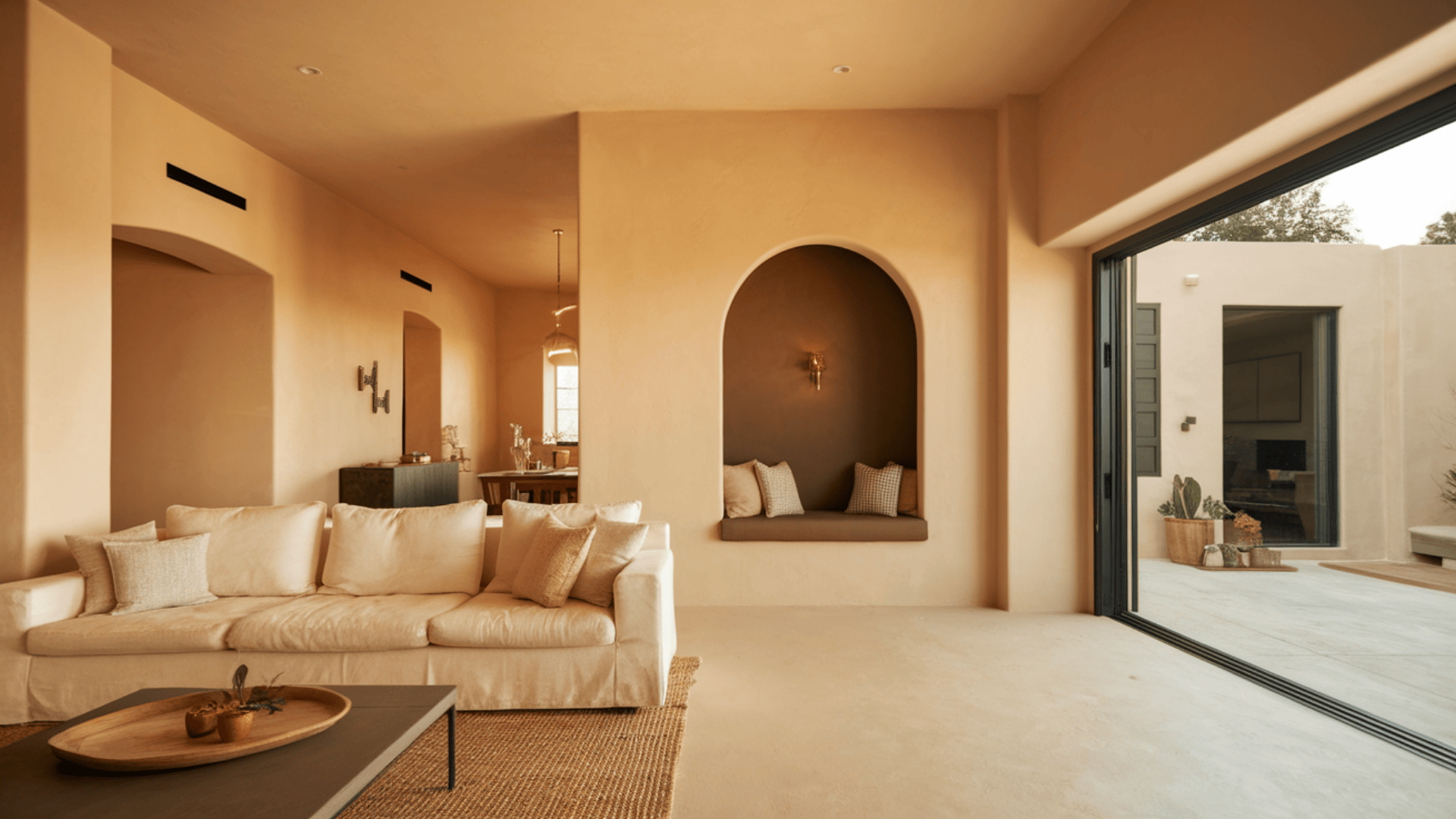
LRV also helps colors feel steady from room to room.
You don’t need all rooms to match; a slight shift in LRV helps the home feel cohesive.
- In open layouts, change LRV slightly between areas to show use without bold breaks.
- In small or quiet rooms, go lower in LRV for a more held feel.
- When moving from inside to porch or patio, try to stay within 5 points of LRV.
- To highlight a wall or feature, make a clear LRV shift—for example, a wall at 20 next to walls at 75.
These steps help create smoother transitions without using the same color over and over.
LRV vs. What the Eye Sees
What looks bright isn’t always high in LRV.
Some colors seem strong or bold but reflect little light.
Others look calm but reflect quite a lot.
Here’s a comparison:
| COLOR TYPE | VISUAL BRIGHTNESS | LRV | NOTE |
| Bright Red | High | 15–20 | Looks bright, reflects little |
| Soft Tan | Medium | 55–65 | Reflects more than expected |
| Dark Blue | Low | 5–10 | Absorbs light |
| Light Yellow | High | 70–80 | Reflects well and looks bright |
| Cool Gray | Medium | 45–60 | It may appear darker in some lights |
| Bright White | Very high | 90+ | Reflects almost all light |
This table shows why checking both LRV and appearance is smart.
Testing Before Painting
Never trust a paint chip alone.
The color may look different at home.
To test:
- Paint a sample on your wall, at least 2 feet by 2 feet.
- View it in the morning, midday, and evening.
- Turn lamps on and off to check under different lights.
- Step back and look from across the room.
This test gives a full picture of how the color behaves in real light and space.
What Professionals Consider
Designers don’t just pick colors by looks.
They check how paint reacts to light.
The following are the points that are considered by designers before painting:
- Paint chips are small. LRV tells how much light the full wall will reflect.
- In dark rooms, high-LRV colors help brighten the space.
- In very large spaces, low LRV colors can make the room feel closer.
- If a room has dark floors or big furniture, use higher-LRV walls to prevent it from looking too dim.
- In homes with rooms facing different directions, pick colors with similar LRV values and adjust the tone a little.
That’s why LRV is a key part of their decision.
Tips to Use LRV in Your Home
Always check the LRV number on paint cards or online before you buy.
Try the color on a sample first
Look at it during the day and at night to see the true look.
Here are the tips to use LRV in your home:
- Check paint cards or websites for the LRV number.
- Always test paint in your space before deciding.
- Look at the sample under both sun and lamp light.
- Use a lower LRV for rooms meant for rest.
- Use higher LRV for active spaces like kitchens or playrooms.
- Choose higher LRV trims if you want them to stand out from the walls.
Pick lower LRV colors for bedrooms or calm spots.
Use high LRV shades for busy areas like kitchens or playrooms.
If you want the trim to stand out, use a higher LRV than the walls.
Why LRV Makes a Difference
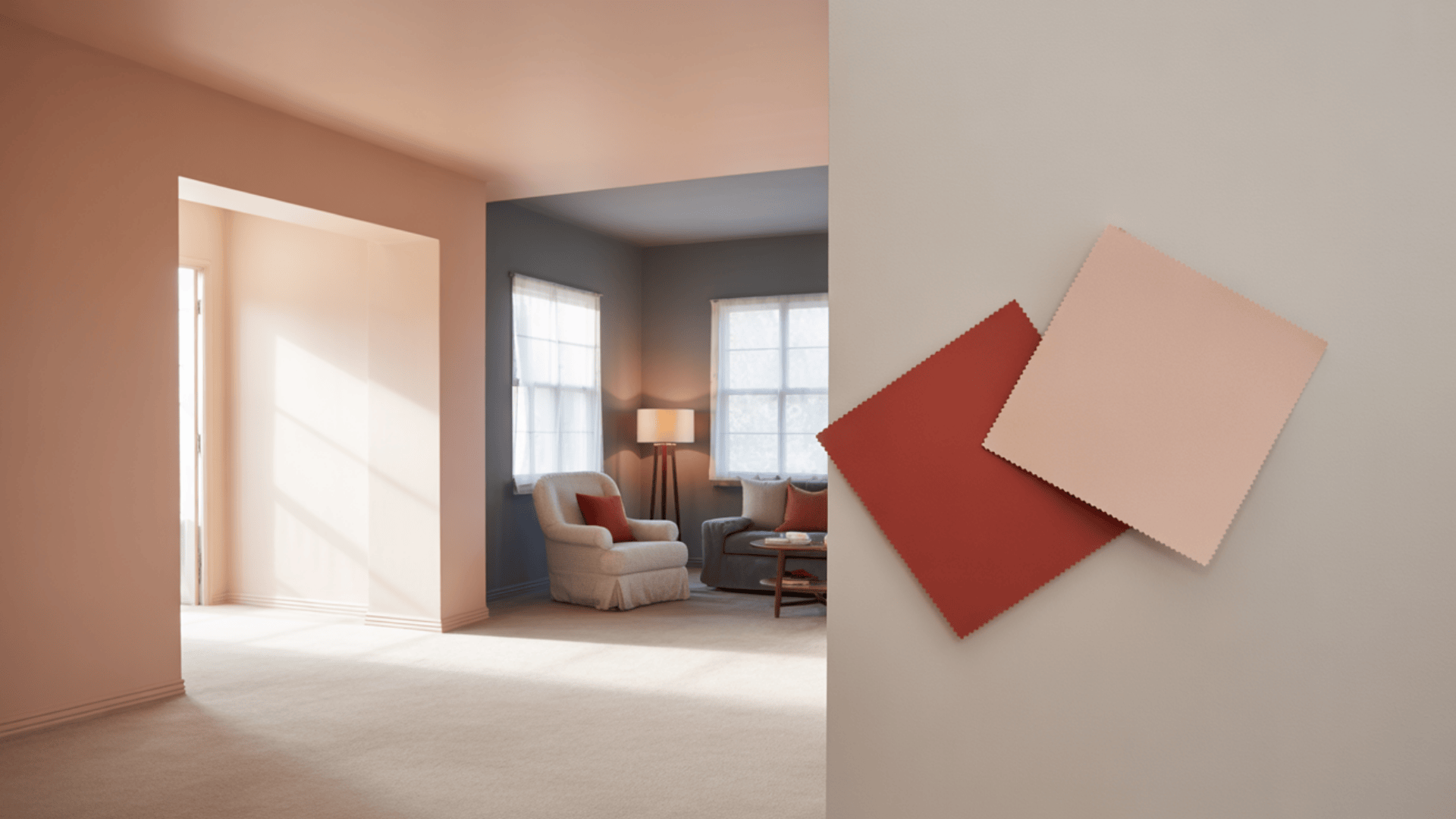
LRV helps you plan colors that look good and work better.
It gives you facts about how much light your paint will bounce around.
This enables you to reduce lighting costs, match paint to a room’s use, and make your space feel more inviting.
It’s a simple, clear tool for smart paint picks.
It also helps your home feel steadier and planned.
If one room flows well into the next, it feels more peaceful.
If a dark space becomes brighter without extra lights, it saves you money.
If your trim stands out just the right amount, your space looks clean and put together.
Looking at LRV and testing samples on your walls leads to fewer mistakes and better results.
From bold accents to soft backgrounds, LRV guides you to the right choice.
It helps you get the look, feel, and function you want in every room.
Conclusion
LRV helps you pick colors that work best in your home.
Paint colors affect how big rooms feel, how much light you need, and even your power bill.
With this guide, you can make smart choices about paint colors.
Think about how sunlight comes into each room.
Think about what you do in each room.
Check LRV numbers on paint cans and test samples on your walls.
Watch how they change when the sun moves across the sky.
Using LRV well makes your home look better, feel better, and even work better.
You’ll save money on lights and make each room feel just right for what you do there.
Happy painting!

